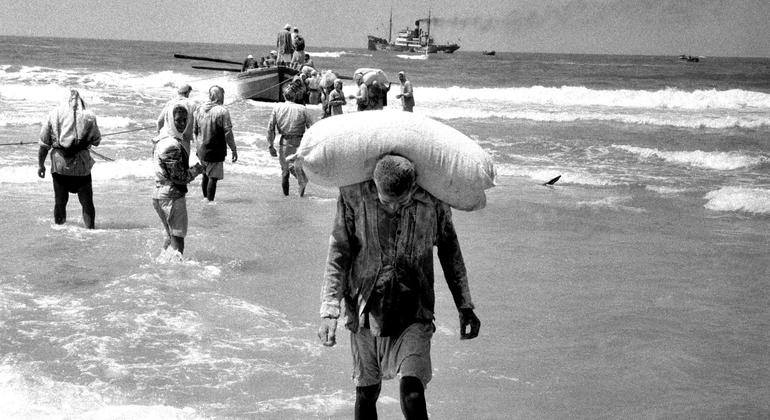UNRWA was established by UN Member States in 1949 to carry out direct relief and development programmes for Palestinian people who lost their homes following the 1948 Arab-Israeli war.
UN Photo has curated a collection from its archive that follows the agency’s critical work since it began operating throughout the region and over the last 74 years.
Here are some snapshots from the full photo essay:
Children attend class at an UNRWA-supported school in the Gaza Strip in 1954. (file)
In 1950, the UN agency was responding to the needs of about 750,000 Palestinian refugees.
The agency undertook a wide range of activities. In 1954, UNRWA embarked on a project to anchor the sands and make at least one third of the clay plain beneath available to cultivation by the refugees.
Camel convoys brought seedlings to an area being reclaimed, and at the end of 1956, over 2,500,000 seedlings had been planted to protect 3,700 dunums of potentially cultivable land in the sand dunes area.

Children are seen here receiving physical therapy treatment at the Cartbawi Centre in Lebanon. (file)
In 1959 and 1960, UNRWA spent nearly $100,000 for the complete education and training of 119 children with disabilities.
There were specialised centres established at 15 Middle East institutions.

A Palestinian man salvages items from the rubble of his home destroyed by Israeli strikes on a building in northern Gaza Strip in 2014. (file)
Today, some 5.9 million people in Gaza, the West Bank, Lebanon, Jordan and Syria are eligible for UNRWA services.
Find out more about what UNRWA is doing to help Palestine refugees here.
Stories from the UN Archive
Catch up on more Stories from the UN Archive here, and watch UN Video’s playlist here.
Our series showcases epic moments across UN history, cultivated from the UN Audiovisual Library’s 49,400 hours of video, 18,000 hours of audio recordings and thousands of photos.
Please Note: Thenewsintel.com is not part of or affiliated in anyway with the United Nations and it’s subsidiaries, we are an independent News outlet.



